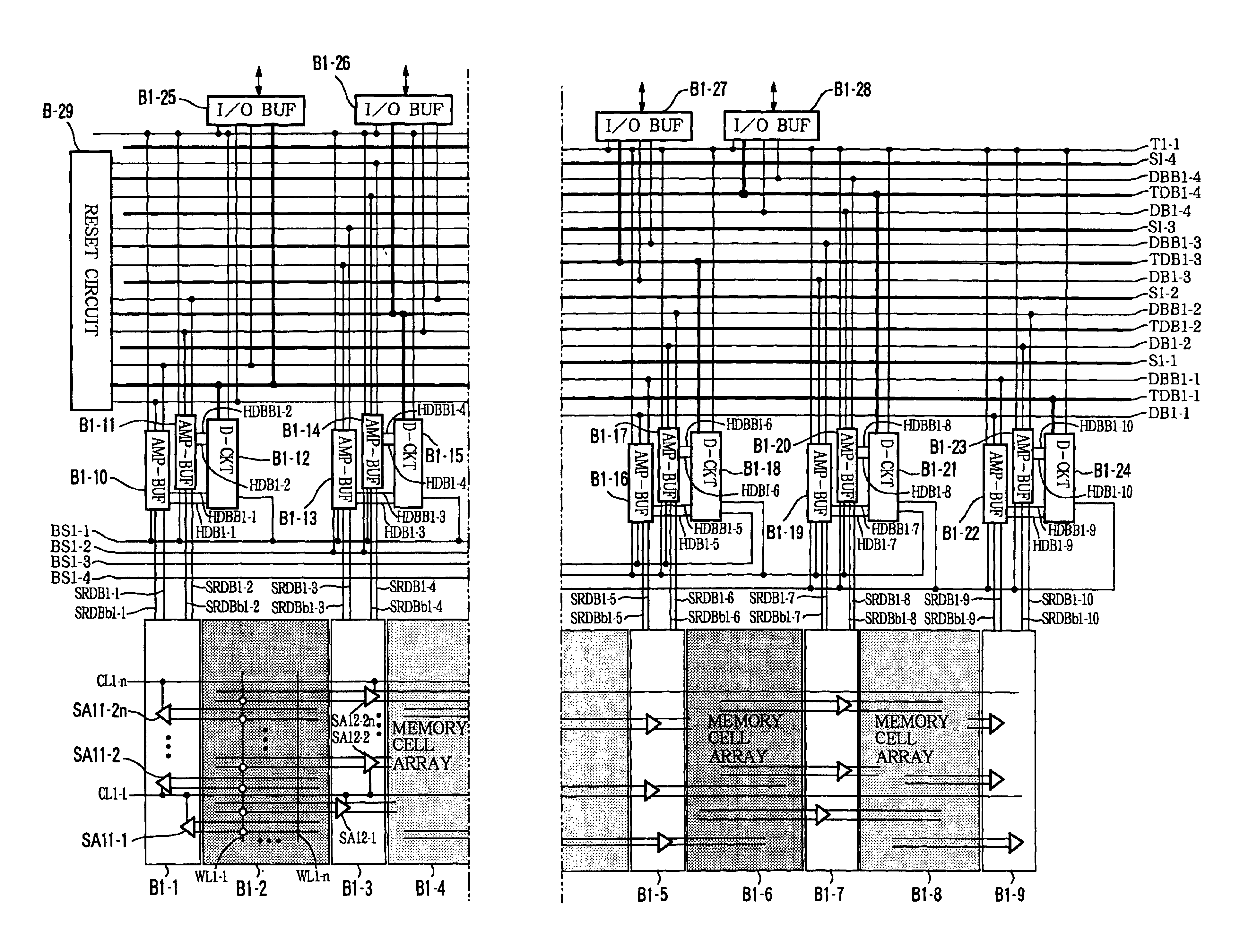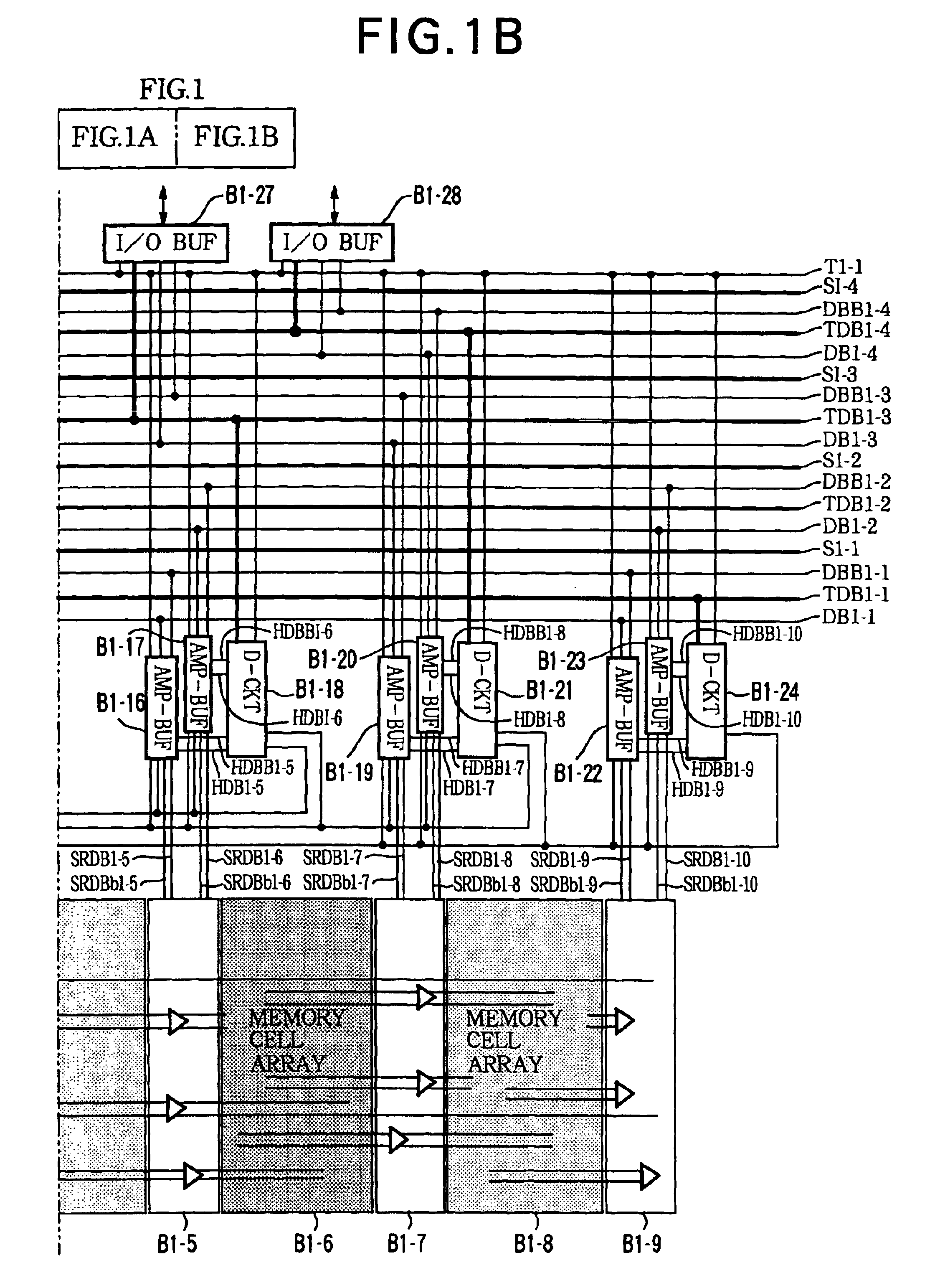Rapidly testable semiconductor memory device
a memory device and semiconductor technology, applied in the direction of information storage, static storage, digital storage, etc., can solve the problems of inability to know which of the two memory cells being compared is defective, the type of test takes considerable time, and the problem becomes irrelevan
- Summary
- Abstract
- Description
- Claims
- Application Information
AI Technical Summary
Benefits of technology
Problems solved by technology
Method used
Image
Examples
first embodiment
Referring to FIGS. 1A and 1B, the first embodiment of the invention is a semiconductor memory device comprising four memory cell arrays B1-2, B1-4, B1-6, B1-8 interspersed among five sense amplifier arrays B1-1, B1-3, B1-5, B1-7, B1-9. The memory cell arrays are spanned by n column lines CL1-1 to CL1-n, where n is an integer greater than one. Each column line activates four sense amplifiers adjacent each memory cell array: for example, the first column line CL1-1 activates sense amplifiers SA11-1 and SA11-2 in the sense amplifier array B1-1 on one side of memory cell array B1-2 and sense amplifiers SA12-1 and SA12-2 in the sense amplifier array B1-3 on the other side of memory cell array B1-2. Each sense amplifier is coupled to a complementary pair of bit lines extending across the adjacent memory cell array or arrays. Each memory cell array includes n word lines WL1-1 to WL1-n, and n×n memory cells, indicated by white circles, disposed at alternate intersections of the word lines a...
second embodiment
The second embodiment enables a semiconductor memory device with twice the memory capacity of the device in the first embodiment to be tested in the same space of time as in the first embodiment. The number of defective columns that can be repaired in each memory cell array is less than in the first embodiment, however, because the scheme illustrated in FIGS. 8A and 8B cannot be used.
Third Embodiment
Referring to FIGS. 16A, 16B, and 16C, the third embodiment comprises the same sense amplifier arrays, memory cell arrays, output amplifier-input buffers, primary and secondary decision circuits, input-output buffers, reset circuit, data bus lines, read data bus lines, comparison data bus lines, test data bus lines, shield lines, and block select signal lines as the second embodiment. These elements are indicated by the same reference characters as in the second embodiment, except that ‘B3’ and ‘S3’ are changed to ‘B4’ and ‘S4’: for example, the first sense amplifier array is now designat...
third embodiment
The third embodiment thus provides the combined effects of the first and second embodiments.
PUM
 Login to View More
Login to View More Abstract
Description
Claims
Application Information
 Login to View More
Login to View More - R&D
- Intellectual Property
- Life Sciences
- Materials
- Tech Scout
- Unparalleled Data Quality
- Higher Quality Content
- 60% Fewer Hallucinations
Browse by: Latest US Patents, China's latest patents, Technical Efficacy Thesaurus, Application Domain, Technology Topic, Popular Technical Reports.
© 2025 PatSnap. All rights reserved.Legal|Privacy policy|Modern Slavery Act Transparency Statement|Sitemap|About US| Contact US: help@patsnap.com



